
An American's Guide for the Camino de Santiago
The medieval pilgrimage known as the Camino de Santiago is as lively as ever. These days, close to half a million people travel to trailheads across Western Europe in order to walk or cycle to the grand cathedral in Santiago de Compostela. While the spiritual nature of the trek is still palpable, many modern-day pilgrims are drawn to the Camino because it allows them to see beautiful parts of foreign countries (including towns and villages that are well off the beaten path), to check off an exceptional bucket list experience, to learn the history of this UNESCO World Heritage Site, to meet open-minded and fun-loving people, and/or to whip themselves into shape. Thanks to word of mouth and popular culture, the Camino is no secret to Americans. But while an average day on "The Way" usually produces a Yankee or two, in general, they are not as well represented as other Western nations. So let's turn that around by answering some of the biggest What, Where, Why, and How questions that stateside adventurers may have. Here is an American's guide to the Camino de Santiago from a tried-and-true pilgrim.
What is the Camino de Santiago?
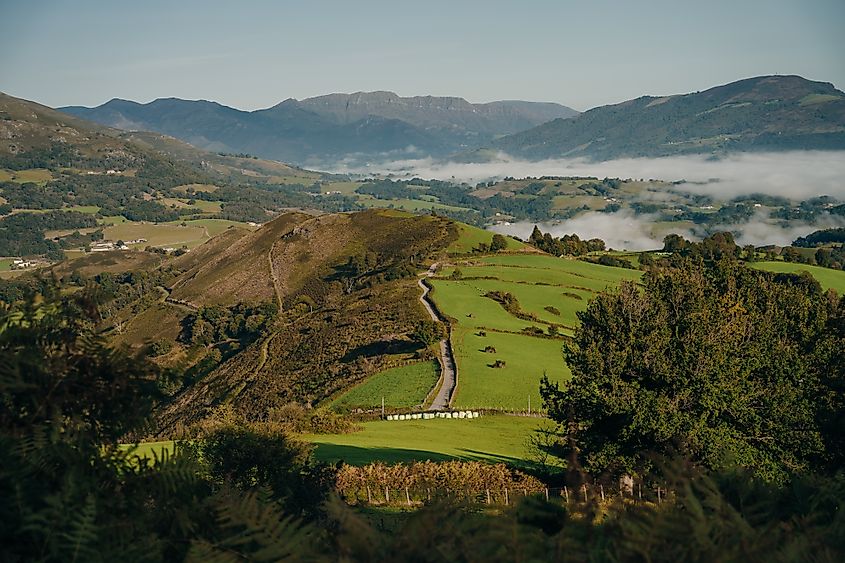
The Camino de Santiago means "The Way of Saint James" – a general title used to describe the various footpaths that converge in Santiago de Compostela (where the Apostle is said to rest) from all over Spain, Portugal, France, and beyond. Therefore, the first order of business is deciding which Camino to do. There are dozens to choose from, but first-timers might want to select one of the Classic Routes of the Camino de Santiago, particularly the Camino Francés or The Coastal Way of the Camino Portugués. These well-established routes are easy to follow, have plenty of accommodations (i.e., albergues), are social but still peaceful, and are suitable for walkers and cyclists alike – not to mention, they are both extraordinarily scenic. If raw solitude is the priority, then one of the lesser-known routes will better fit the bill.
The next factor that will shape your pilgrimage is the distance you feel comfortable tackling. Just how far is the Camino de Santiago? Well, it depends. Each route varies in length, and while there are only a couple of accepted finishing points, most of the Caminos can start from just about anywhere. There is but one rule that needs to be followed in order to become a certified pilgrim: walk at least 100 kilometers/62 miles or bike 200 kilometers/124 miles (sorry folks, the Camino signposts use the metric system). These criteria have turned the town of Sarria, Spain, into the most popular starting point. Almost one-third of all pilgrims, select this site along the Camino Francés because it sits about 114 kilometers from Santiago. With that said, the Camino Francés formally starts from St.-Jean-Pied-de-Port, France (an approximate distance of 764 kilometers/474 miles), and the Camino Portugués Coastal Way kicks off in Porto (~266 km/165 miles from Santiago). Other core routes range from 119 km/74 miles (Camino Inglés), to just shy of 1,000 km/620 miles (Via de la Plata). Each Camino is unique and can be sculpted to your fitness level and timeframe.
Getting to the Camino
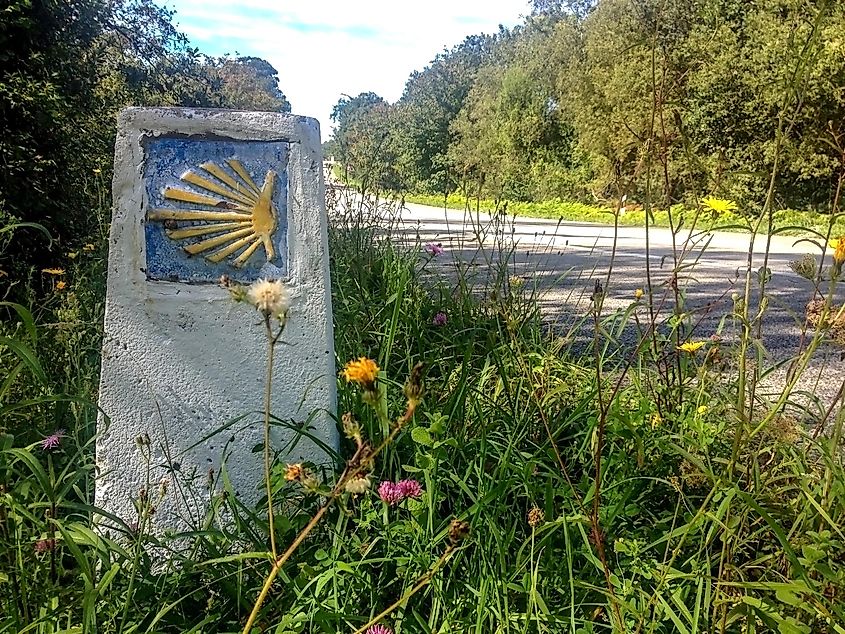
Once you know what Camino you want to try and where you'd like to start, the travel logistics will become reasonably clear. Most major American hubs operate direct or one-stop flights to Madrid, Barcelona, Lisbon, Porto, and Paris – all of which will work well for the upcoming pilgrimage. Western Europe maintains a stellar rail system, which will either take you directly to your Camino town of choice, or at least to within range of a short follow-up bus ride. For example, when I hiked the Camino Portugués in 2022, I flew straight to Lisbon and then started walking from there the very next morning. My girlfriend also flew into Lisbon a couple of weeks later and then took the train to Porto in order to meet me in time for the Coastal Way. This past year, I tried the Camino Francés during the off-season and had to get a little more creative with my transportation. First, I flew to Barcelona and then took the train up to Pamplona (thinking I could simply take a bus through the Pyrenees to St.-Jean-Pied-de-Port – which is valid until October 15th), before taking a bus to San Sebastian, another bus to Bayonne, France, and then connecting the final dot via a one-hour train ride. Even though the latter journey required more steps, it was still straightforward. In these parts of Europe, it's pretty easy to get from place to place without a car.
Read More: 10 Charming Towns Along the Camino Francés
When to Go
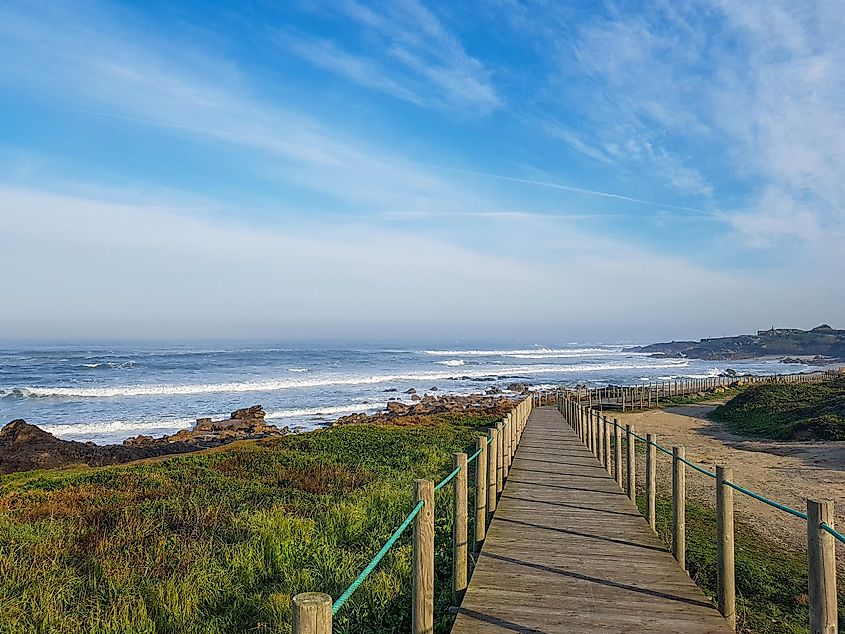
Regardless of when you tackle the Camino de Santiago, there will be trade-offs. The summers bring long sunny days, but also intense heat that is only exacerbated by the many exposed sections. For this reason, pilgrims can be seen hitting the road as early as 5 am. Summers in Europe are also notoriously busy. This is great if you like walking amongst company and feeling the energy of packed Old Town tapas bars, but can also take a little away from the introspective allure of the pilgrimage. Furthermore, because of the summer surge, it might be necessary to plan out daily stages and call ahead to ensure available beds in the pilgrim hostels.
Pushing off in the spring or fall essentially brings the inverse of all the previous scenarios. For some stretches, you'll have the path entirely to yourself, but also fewer cafes and albergues to choose from. Many smaller towns will be closed down entirely. The cooler temperatures will be predominantly ideal for walking, but perhaps a little more than you bargained for in the mountainous regions of Northern Spain. If not snow, then rain might become a regular reality. This means bringing along versatile layers and therefore hauling a heavier pack.
Given the climate discrepancy between the West Coast of Portugal and the North Coast of Spain and between the prairies and Pyrenees, it is hard to pinpoint a universal Goldilocks timeframe. But generally speaking, early fall sees a dwindling of summer vacationers and dodges the weather extremes. Late August/early September was perfect for the Camino Portugués. And after walking the Camino Francés in November, I would recommend that future pilgrims tackle this one in October. September might be better weatherwise, but given the immense popularity of this path, I think it's worth waiting an extra month.
Where to Stay
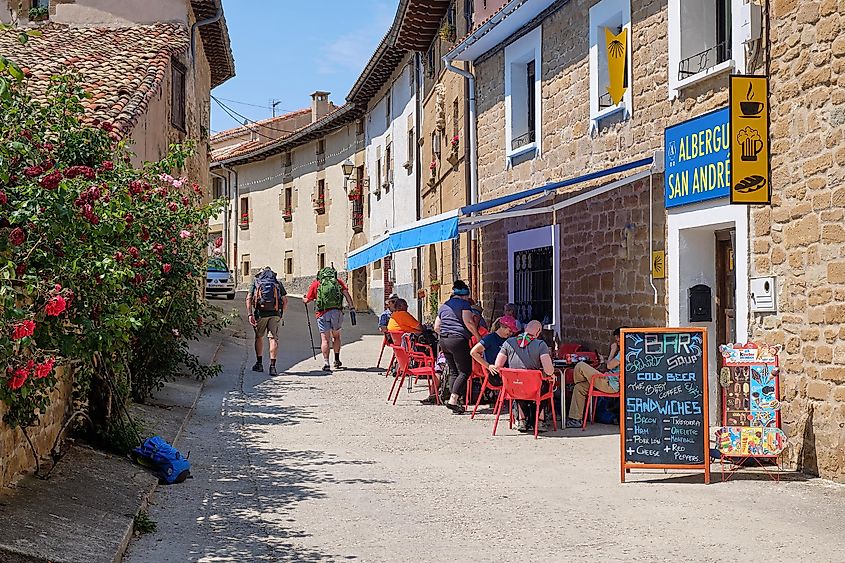
As I've alluded to a couple of times now, the most common and traditional way to hike or bike the Camino is to stay at the albergues. These are no-frills hostels that (often) only accept pilgrims. For this reason, a special "passport" needs to be carried the whole time (which can be purchased for a few Euros at any pilgrim office or official starting point), and stamped at each stop along the way. This is far from a chore and has actually become a pretty fun exercise. At the end of your pilgrimage, you'll have a souvenir booklet full of mementos.
Albergues provide a single bed (usually a bunk bed), a mattress cover, and a pillow, as well as bathroom/shower facilities and maybe a basic kitchen. In the absence of a communal cooking area, many albergues will offer a set "pilgrim's menu" for an additional fee. The whole point of albergues is to keep costs down and to mirror the early Camino experience in which devout Christians walked for weeks or months on end, relying on good Samaritans to provide them refuge.
If sleeping in a room full of snoring strangers doesn't sound appealing, fear not – with a bit of extra planning and budgeting, one can easily find a hotel or private guesthouse at the end of each day.. Taking things in the other direction, there are plenty of pilgrims who come prepared to camp out wherever the day's end finds them. Personally, I mostly sleep in the albergues, but I like to mix in a couple of hotels in order to get cleaned up, catch up on sleep, and recharge my introvert batteries. I have also crashed in churches, rented an RV at a laid-back campground, and even cowboy-camped under a bush behind a gas station. To an uneasy American taking on his/her first pilgrimage, I would say, make your peace with the albergues. They are everywhere, they won't break the bank, and they are an integral part of the Camino's traditional charm. This brings us to our next topic.
Who to Go With
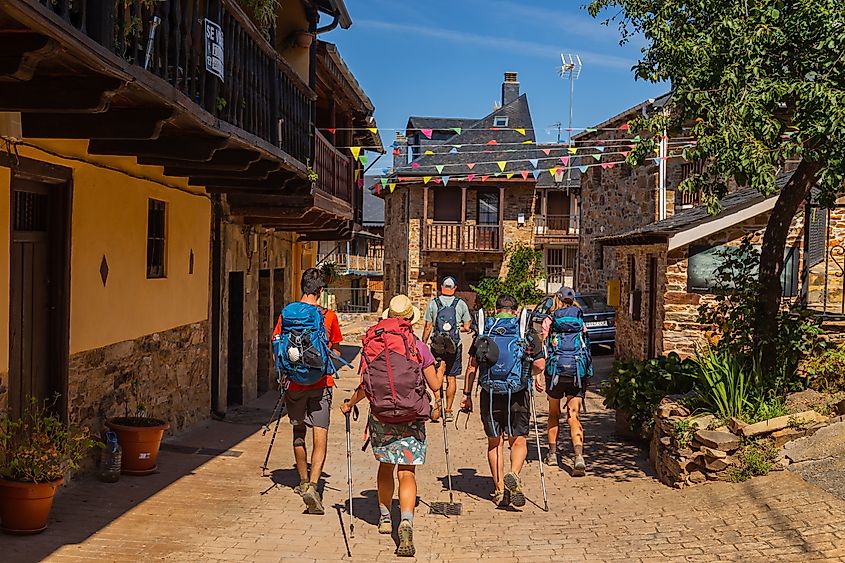
Whoever you choose to walk with, keep in mind that you will be with that person (or people) day in and day out, with minimal distractions (note: this warning pertains to the company of your own mind). This can be a tremendous bonding opportunity for couples, friends, and family members… or you might arrive in Santiago eager to part ways.
Read More: The Camino Francés: The Plateau and the People
Even if you walk the Camino alone, you will never really be alone. The typical quest and shared accommodations bring disparate groups together. You might walk with a fellow pilgrim for an hour, a day, or the majority of the journey. If you're open to meeting people, then trailside chit-chat and bunk-bed banter will forge all sorts of unique connections. At the same time, pilgrims tend to respect when someone is on an inward journey. There are no set rules for socializing on the Camino, and you can take a different approach each day, depending on how you feel.
Cultural Norms
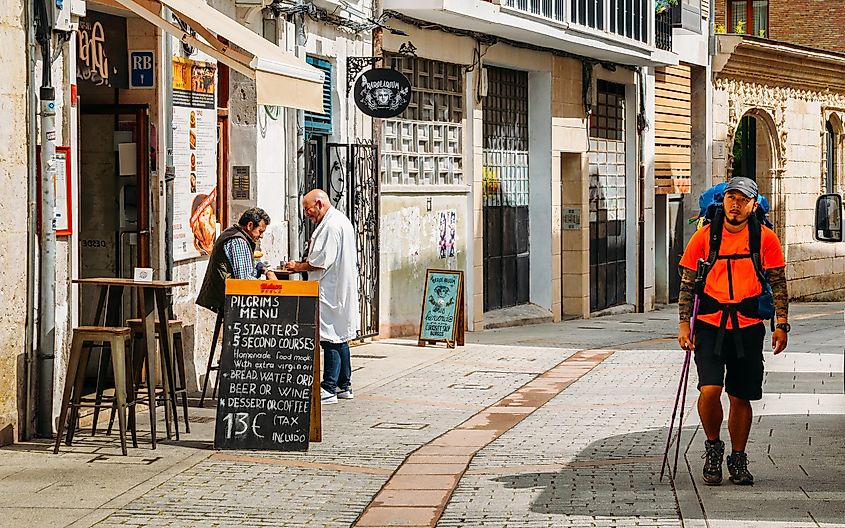
While on the subject of socializing, it is worth discussing some of the cultural components of the Camino. Yes, at its core, this is a revered Catholic pilgrimage. If this is something that resonates with you, then you will have plenty of opportunities to exercise your faith. Pilgrim masses are held at significant cathedrals, there are countless shrines and landmarks, and you will be walking through God's country in the footsteps of millions of devout wanderers. If, on the other hand, you come from a different background, then don't worry about adopting any particular practices or beliefs – be respectful and go with the flow.
In terms of communication, I've noticed that the majority of pilgrims can speak at least broken English, and I've found English to be fairly common in the bigger towns and cities (but not so much in the quaint villages). Ultimately, Americans will get by just fine with English, Google Translate, and occasional pantomime/Pictionary sessions. The 13% of Americans who are native Spanish speakers, or those who learned it in school, will be particularly well-suited for one of the Spanish Caminos (but recognize that the accents and dialects will differ from your neighbors to the South). If you don't have a background in the native tongue of your chosen Camino country, then brushing up on essential phrases is a great way to show respect and gratitude and counter the less-flattering connotations that some folks harbor about Americans. Adding some Duolingo lessons to your daily routine can be a rewarding way to prepare for and get excited about your upcoming Camino. But what about physical preparation?
How to Prepare for the Camino de Santiago
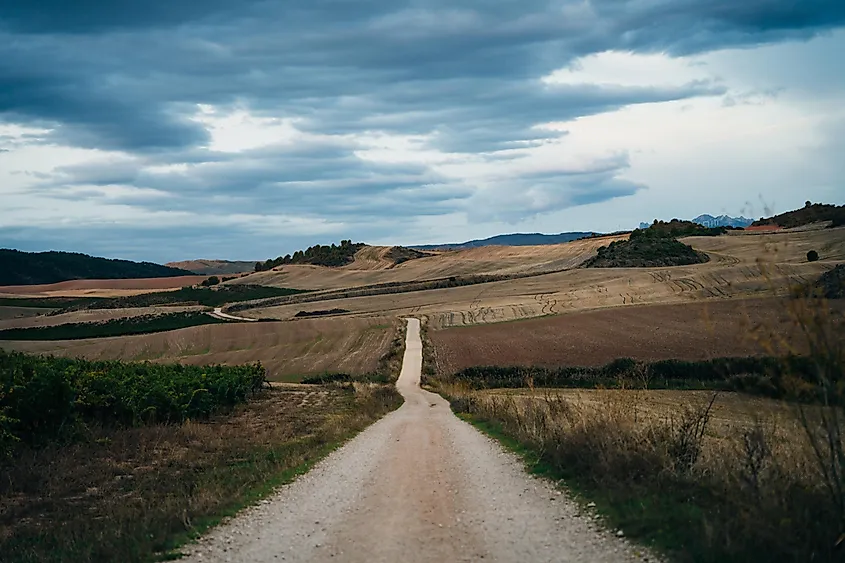
The average American walks only a mile or two per day. The best way to prepare for the Camino is to blow that figure out of the water (just so long as you build up gradually). Look for ways to get your steps in throughout the day, but also do your best to schedule focused walks. There's quite a difference between casually walking around and going for a walk. Many a pilgrim, myself included, has been humbled by just how complex such a commonplace and seemingly passive form of exercise ends up being. The cumulative grind of the Camino can only be understood through direct experience. So, do your best to mimic the conditions that you'll be facing on a daily basis. Do some back-to-back hikes on the weekend to practice walking on tired legs – and don't forget about the pack. Even just 10 or 20 pounds feels significant on those long days. Such simulations will improve your cardio and muscular strength, as well as build precious calluses – all of which will help reduce injuries and enhance your enjoyment.
Read More: The Camino Francés: Castles, Mountains, and Green Galicia
What to Pack?
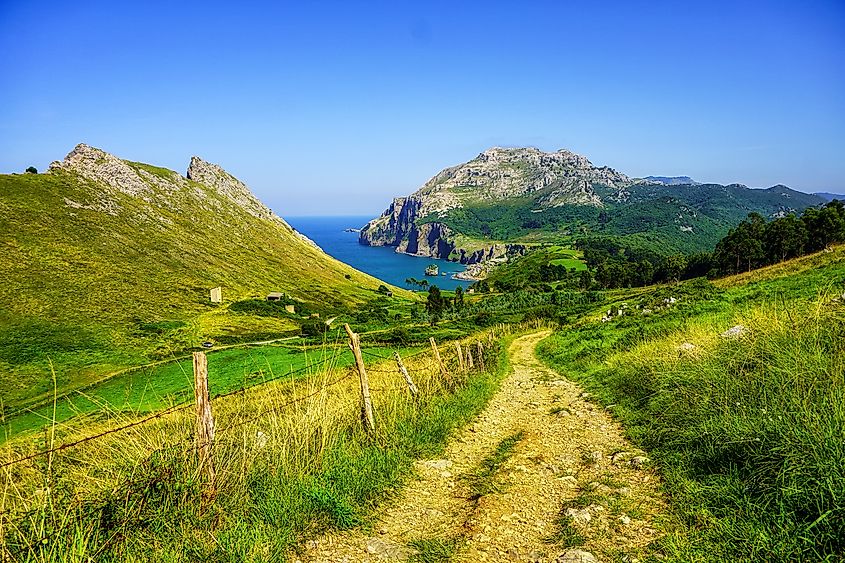
The nice thing about the Camino de Santiago compared to long-distance wilderness trails is that food, water (and wine), shelter, and even replacement gear are easy to come by. This means that a modest daypack (in the 20 – 30 liter range) should do the trick. Everyone's list will look a little different, but here are some of the critical pieces.
Essentials:
- Sleeping Bag
- Water Bottle (1 L min.)
- Sun protection (hat, buff, sunscreen, chapstick, etc.)
- Small medical kit (blisters, first-aid, medicines)
- Comfortable footwear (i.e., fresh but broken in)
- Flip-flops or light sandals
- Phone with European outlet charger.
- Offline map apps (ex., Buen Camino or Camino Ninja) and/or physical map/guidebook
- Passport, pilgrim passport, credit card (Visa or Mastercard), and a few hundred Euro in cash (many albergues and smaller restaurants only accept cash)
- Packable sports towel, small bottle of soap, toothbrush
- Rain jacket and drybag for valuables
- A couple of changes of weather-appropriate clothes (Don't overpack! You can do laundry in the albergues or embrace the stank).
- Light snacks
Optional:
- Hiking poles
- Electrolytes/other nutritional supplements
- A good book (choose wisely)
- Camping Gear (Tent, stove, etc.)
Buen Camino
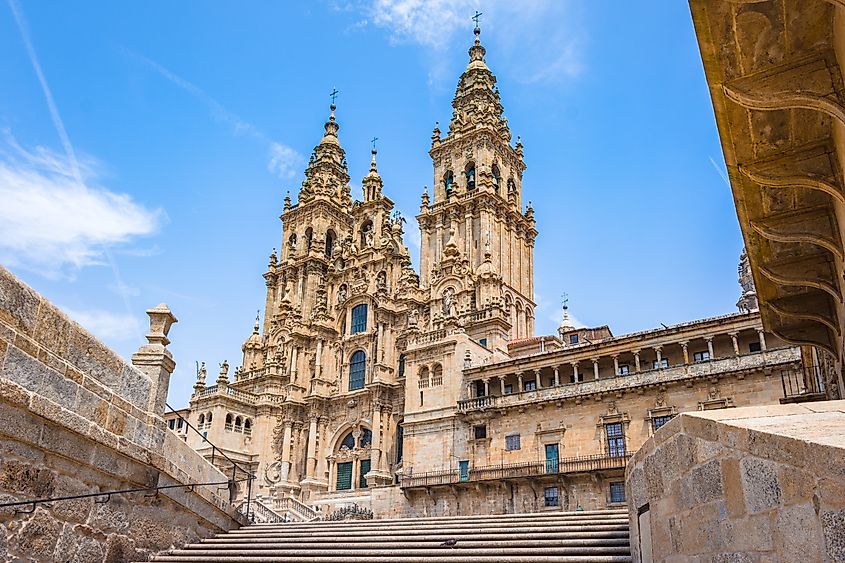
Participating in the long-standing pilgrimage known as the Camino de Santiago is a life-changing endeavor. Between the stunning landscapes, novel yet relatable cultures, and the rewarding physical/mental challenge, the Way of Saint James is something that many Americans can benefit from. It's time to revisit our Old World roots, shake off the paradox of sedentary lifestyles and hustle culture, and reconnect with nature and maybe even a form of spirituality. Whichever route you choose, whoever you choose to go with, and however you choose to go about it, I hope that Camino enriches your life in the same way that it has mine and millions of pilgrims throughout the last millennia. Buen Camino! Which is to say, have a great trip.











